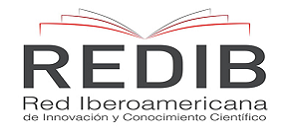Basketball didactic strategies to strengthen cognitive competence
Keywords:
Basketball Skills, Cognitive Skills, YouthAbstract
Objective: To explore the connection between basketball skills and specific cognitive abilities of individual youth players.
Methods: The research was carried out on a sample of 80 players aged 7 to 11, from various Ancon basketball teams. Basketball skills were assessed with 15 tests, covering most basketball activities: shooting, passing, dribbling, playing without the ball in attack and defense. The cognitive abilities of the basketball players were assessed with five tests: Domino Test D48 (general intelligence test), and four tests of perceptual factor cognitive abilities.
Results: The results of the canonical analysis showed that both domains are correlated (canonical correlation coefficient R = 0.727, thus the coefficient of determination R² = 0.529). Only the first factor was significant and accounts for 53% of the explained variance. The cognitive skill variables with the largest projection on the first factor and contributing most to the connection between these two domains are perceptual identification, perceptual analysis, logical reasoning, and visual specialization.
Conclusions: The correlation obtained from these two areas highlights the importance of cognitive abilities in the training process of basketball players, as well as in the process of learning and improving the development of basketball skills.
Downloads
References
Alarcón, F. U. (2017). Las funciones ejecutivas como predictoras del nivel de pericia en jugadores de baloncesto. Revista de Psicología del Deporte, 26(1), 71-74.
Gutiérrez-Vargas, R., Ugalde-Ramirez, J. A., Ortega, J. P., …. Castillo Rodriguez, A. (2023). Perfil antropométrico, aeróbico y de potencia muscular de jugadores juveniles de baloncesto costarricenses. Pensar en Movimiento: Revista de Ciencias del Ejercicio y la Salud, 21(1), 1-17. https://doi.org/10.15517/pensarmov.v21i1.53772
Jakovljevic, S. P. (2022). El impacto de balón parado-manejo de simulacros fundamental de la ofensiva de las habilidades del baloncesto en 13 y 14 años, los jugadores de baloncesto. Facta Universitatis, Serie: Educación Física y el Deporte , 5(1), 393-402.
Karaleji?, M. J. (2019). Relations between basketball skills and certain cognitive abilities of junior basketball players. Fizi?ka Kultura, 63(1), 60-75.
Omeñaca, R. (2023). Del porqué al cómo de los modelos pedagógicos: Buscando respuestas desde la neurociencia, la psicología y la didáctica de la Educación Física. In Modelos pedagógicos en la educación física y el deporte. Qartuppi.
Chica, P. M. (2020). Percepción y programación deportiva en los estudiantes de la Universidad Estatal Península de Santa Elena. Revista Killkana Sociales, 4(2), 51–60.
Roble Alzola, Y. (2021). Ejercicios especiales para la efectividad del tiro libre en los baloncestistas 13-15 de Holguín [Bachelor's thesis, Universidad de Holguín, Facultad de Cultura Física].
Zeyu, L. (2023). Análisis de lesiones articulares y habilidades de movimiento en el baloncesto universitario. Revista Brasileira de Medicina do Esporte, 29(3), 1-4.
Downloads
Published
How to Cite
Issue
Section
License
Copyright and Licensing
For all articles published in Atena Journals, copyright is retained by the authors. Articles are licensed under an open access Creative Commons CC BY 4.0 license, meaning that anyone may download and read the paper for free. In addition, the article may be reused and quoted provided that the original published version is cited. These conditions allow for maximum use and exposure of the work, while ensuring that the authors receive proper credit.
Reproducing Published Material from other Publishers
It is absolutely essential that authors obtain permission to reproduce any published material (figures, schemes, tables or any extract of a text) which does not fall into the public domain, or for which they do not hold the copyright. Permission should be requested by the authors from the copyrightholder (usually the Publisher, please refer to the imprint of the individual publications to identify the copyrightholder).
Permission is required for:
- Your own works published by other Publishers and for which you did not retain copyright.
- Substantial extracts from anyones' works or a series of works.
- Use of Tables, Graphs, Charts, Schemes and Artworks if they are unaltered or slightly modified.
- Photographs for which you do not hold copyright.
Permission is not required for:
- Reconstruction of your own table with data already published elsewhere. Please notice that in this case you must cite the source of the data in the form of either "Data from..." or "Adapted from...".
- Reasonably short quotes are considered fair use and therefore do not require permission.
- Graphs, Charts, Schemes and Artworks that are completely redrawn by the authors and significantly changed beyond recognition do not require permission.
Obtaining Permission
In order to avoid unnecessary delays in the publication process, you should start obtaining permissions as early as possible. If in any doubt about the copyright, apply for permission. Atena Journals cannot publish material from other publications without permission.
The copyright holder may give you instructions on the form of acknowledgement to be followed; otherwise follow the style: "Reproduced with permission from [author], [book/journal title]; published by [publisher], [year].' at the end of the caption of the Table, Figure or Scheme.














